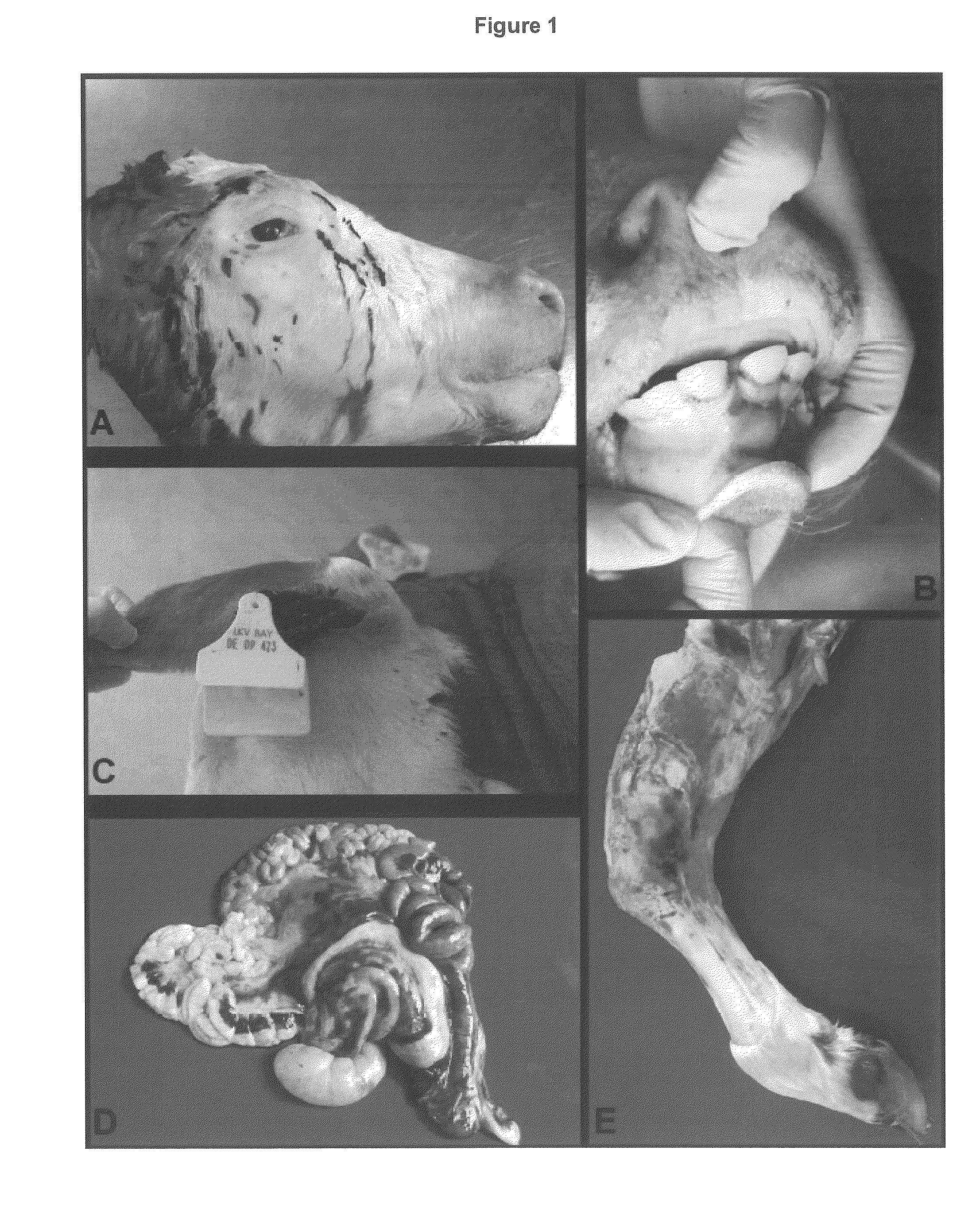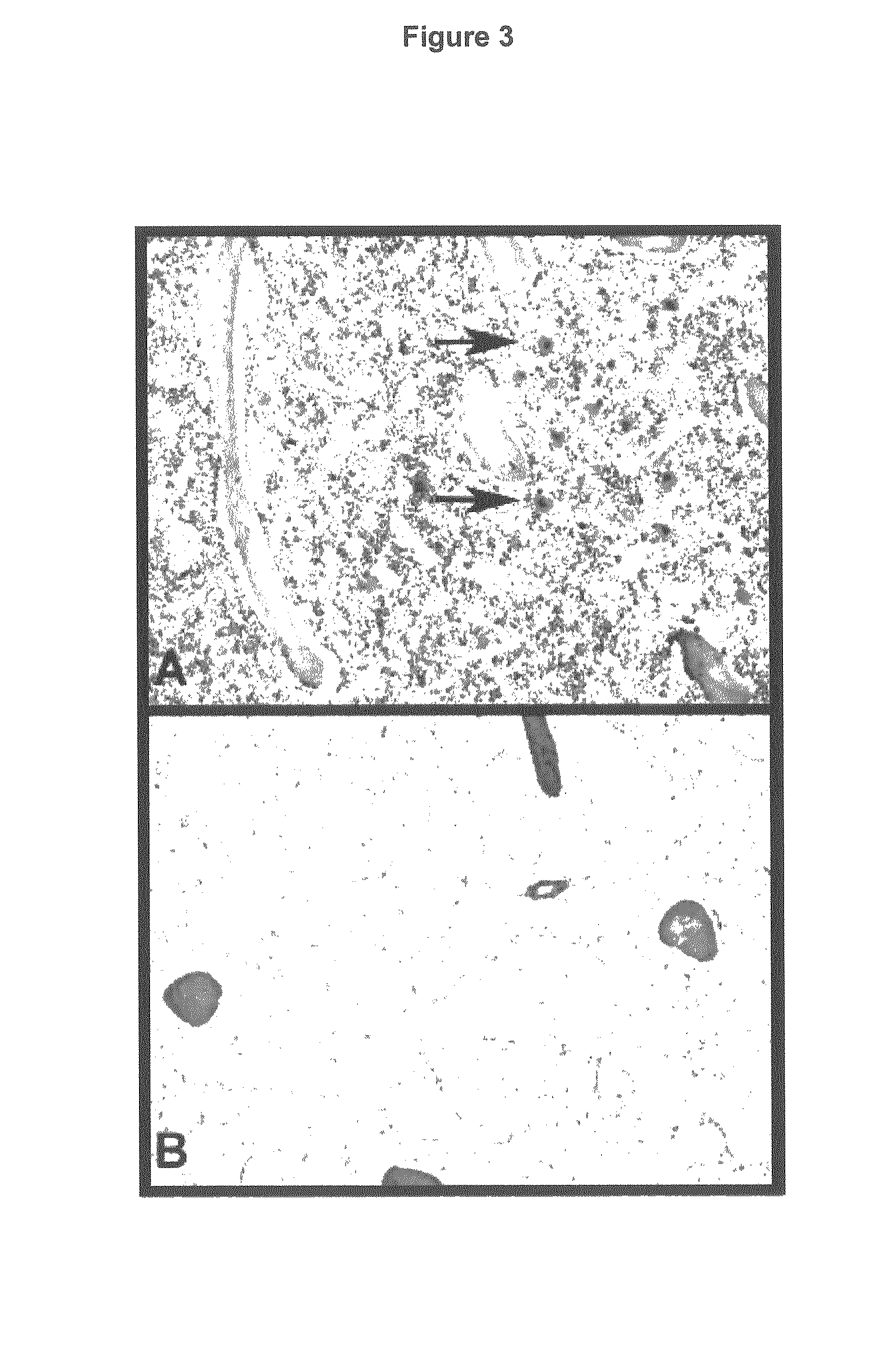Bone marrow aplasia with haemorrhagic disease in calves caused by novel pathogen
a new pathogen and aplasia technology, applied in the field of bone marrow aplasia with haemorrhagic disease in calves caused by novel pathogens, can solve the problems of limited data on i>circovirus /i>infections, and the involvement of pcv2 in swine diseases other than pmws has not been fully investigated
- Summary
- Abstract
- Description
- Claims
- Application Information
AI Technical Summary
Benefits of technology
Problems solved by technology
Method used
Image
Examples
examples
Materials and Methods
Case History
[0128]Between October 2007 and May 2009, 56 calves with haemorrhagic disease, originating from 45 dairy cattle farms in Bavaria, Germany, were presented for necropsy. Medical records were reviewed for age, sex, and breed. Owners were asked for previous diseases and previous medical treatment of calves, feeding of calves, contamination of forage with mould or bracken fern, and use of rodenticides.
[0129]HDS (BNP) cases and animals of the control group are numbered according to Table 1. Animals of the control group are specified as those in the text.
[0130]Eight calves, sent for pathological examination for other reasons than haemorrhagic disease, were included as controls for the circovirus-specific PCR; they are listed in Table 1. Control No. 1 belonged to the same livestock as two cases with haemorrhagic disease (Nos. 11 and 15) and died shortly after birth for unknown reasons. No infectious agent was detectable in this case. Seven calves, included in...
PUM
| Property | Measurement | Unit |
|---|---|---|
| Fraction | aaaaa | aaaaa |
| Fraction | aaaaa | aaaaa |
| Fraction | aaaaa | aaaaa |
Abstract
Description
Claims
Application Information
 Login to View More
Login to View More - R&D
- Intellectual Property
- Life Sciences
- Materials
- Tech Scout
- Unparalleled Data Quality
- Higher Quality Content
- 60% Fewer Hallucinations
Browse by: Latest US Patents, China's latest patents, Technical Efficacy Thesaurus, Application Domain, Technology Topic, Popular Technical Reports.
© 2025 PatSnap. All rights reserved.Legal|Privacy policy|Modern Slavery Act Transparency Statement|Sitemap|About US| Contact US: help@patsnap.com



